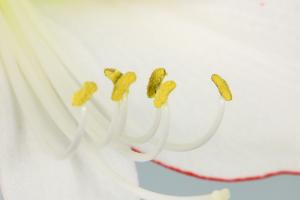How to Draw a Plant Cell
If you're studying biology, you'll need to learn how to draw a plant cell. This is a basic skill that will help you understand the structure of plants and their functions. Drawing a plant cell is not difficult, but it does require attention to detail and a bit of practice. In this article, we'll show you how to draw a plant cell step by step.
Materials You'll Need
To draw a plant cell, you'll need the following materials:
? Paper
? Pencil
? Eraser
? Ruler
? Colored pencils
Step-by-Step Plant Cell Drawing Tutorial
Follow these steps to draw a plant cell:
Step 1: draw a rectangle
To start, draw a rectangle that is about 10 cm wide and 15 cm long on your paper. You can use a ruler to keep the sides straight.
Step 2: draw the cell wall
Now, draw a thick line around the rectangle. This represents the cell wall of the plant cell.
Step 3: draw the cell membrane
Inside the cell wall, draw a thinner line that represents the cell membrane.
Step 4: draw the cytoplasm
Next, fill in the rectangle with a lighter shading. This represents the cytoplasm, which is the fluid inside the cell.
Step 5: draw the nucleus
In the middle of the rectangle, draw a round shape that represents the nucleus of the cell.
Step 6: draw the nucleolus
Inside the nucleus, draw a smaller round shape that represents the nucleolus.
Step 7: draw the endoplasmic reticulum
Draw a series of thin, wavy lines that extend from the nucleus. These represent the endoplasmic reticulum, which is a network of tubes and channels that transport materials throughout the cell.
Step 8: draw the Golgi apparatus
Draw a series of curved lines that intersect with the endoplasmic reticulum. These lines represent the Golgi apparatus, which is responsible for packaging and distributing materials within the cell.
Step 9: draw the mitochondria
Draw a series of small, oval shapes scattered throughout the cytoplasm. These represent the mitochondria, which are responsible for producing energy within the cell.
Step 10: draw the vacuole
Finally, draw a large, circular shape to one side of the cell. This represents the vacuole, which stores materials within the cell.
Step 11: color your cell
Once you've finished drawing your cell, you can add color. Use green for the chloroplasts, which are responsible for photosynthesis, and use light blue for the cytoplasm. You can use pink for the nucleus, and yellow for the mitochondria.
Conclusion
Drawing a plant cell is a useful skill that will help you understand the structure of plants. With a bit of practice, you can create a detailed drawing of a plant cell that shows all of its components. Remember to take your time, use a ruler to keep your lines straight, and add color to make your cell come to life. Good luck!

 how many times do yo...
how many times do yo... how many planted tre...
how many planted tre... how many pine trees ...
how many pine trees ... how many pecan trees...
how many pecan trees... how many plants comp...
how many plants comp... how many plants can ...
how many plants can ... how many plants and ...
how many plants and ... how many pepper plan...
how many pepper plan...






























